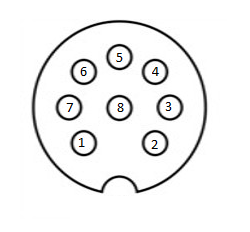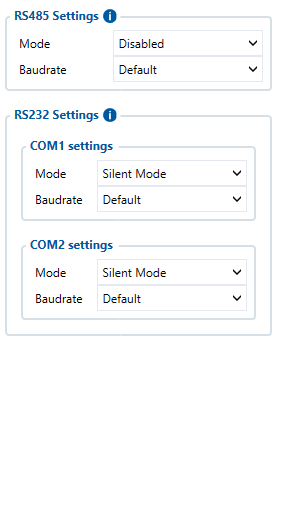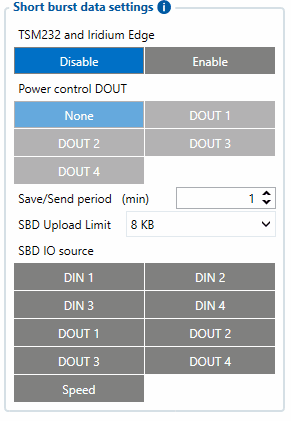Template:FMX640 Short Burst Data
Introduction
Since 00.02.05 firmware version device supports Iridium devices which can send short burst data (SBD) to the server. This means that some data can be sent from the FM device to the server through satellites. From firmware version - 01.02.22.Rev.02, support for Iridium Edge is added. Iridium Edge features an all-in-one SBD module and antenna, with power supply. The plug-and-play satellite IoT terminal can be easily paired with device in order to expand their functionality to no GSM coverage zones. Current Iridium implementation offers ability to generate and send SBD records after set period after the GSM signal is lost. This ensures constant connectivity as Iridium network is available globally.
Connecting Iridium device to
In order to properly connect Iridium device to , Iridium has to be connect to the device via RS-232 - COM1 or COM2. Additionally Pin No. 6 - power control (reference in image below) must to be connected to one of the DOUTs (1/2/3/4), in order to allow device to power ON/OFF Iridium device on demand.
Iridium Edge pinout:
Pin. No |
Signal name |
Signal direction (with respect to Iridium Edge) |
Description |
|---|---|---|---|
1 |
Spare |
- |
Unused |
2 |
Ground |
Input |
Signal and power GND |
3 |
RS232_RX |
Input |
RS232 input |
4 |
RS232_TX |
Output |
RS232 output |
5 |
Power |
Input |
9-32 V positive terminal |
6 |
ON/OFF |
Input |
Optional line to power down Iridium edge |
7 |
Network available |
Output |
|
8 |
Power detectection |
Output |
Active high then Iridium Edge is powered |
Configuring
In order to properly configure to get SBD records, first it is necessary to select correct RS232 mode in RS-232 / RS 485 TAB - “Satellite backup” mode must be selected in COM1/COM2 settings. Baudrate should be set to 19200.
Furthermore, in the Features TAB in Short burst data settings, TSM232 and Iridium Edge must be enabled. Also respective power control DOUT to which Iridium device's PIN6 is connect must be selected.
You should also configure periodic Alarm record save. If the timeout is set to 0, no periodic records are going to be made. It is not recommended to save records often because of satellite traffic prices. 8 kilobytes data limit counter is set which is reset every month. In addition, you can select which IO element can generate the Alarm priority record. The configurable IO parameters are shown as SBD IO sources in the picture below. In order to do that you need to configure these IO elements as a Panic priority. If properly configured SBD records are generated and sent if there is no GSM connection.
In addition, you can select which IO element can generate Satellite records. In order to do that you need to go to the IO tab select IO record priority Panic what you want to get that data through satellites if there is no GSM connection.
In the scenario shown in the above picture when a panic record is made (generated by Digital Input 1 or Digital Input 2) internal 90 seconds timer will start to tick and if that timeout device will not send a record through the GPRS network it will be sent with Iridium satellites. 9 elements can generate Alarm priority records in the current (00.02.05) firmware version. These elements are:
- Digital input 1
- Digital input 2
- Digital input 3
- Digital input 4
- Digital output 1
- Digital output 2
- Digital output 3
- Digital output 4
- Speed
Record which will be sent through the Iridium satellite network will be different than the regular record. It will contain 4 bytes timestamp, 3 bytes longitude, 3 bytes latitude, 1 byte record generation info, 1 byte DIN, DOUT info, 1 byte speed value.


